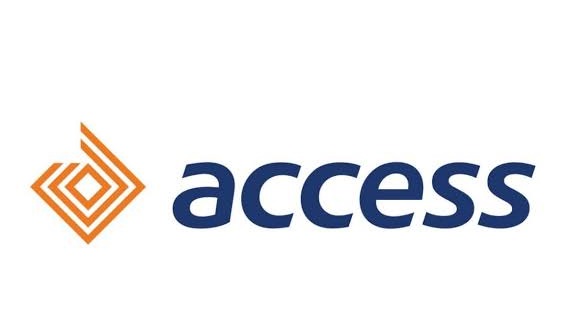- Search for topics or project materials by department. 2015/2016 Research Work 46 ARCHITECTURE 12 Accounting 158 Agriculture & Farming 21 Arts and Crafts 25 BIOCHEMISTRY 30 Bank & Finance 45 Biology 1 Business Administration 162 CHEMICAL ENGINEERING 18 Career People 18 Computer Science 0 Computer Science 244 Computer Science E-books 0 ECONOMICS 117 EDUCATION 78 ELECTRICAL ELECTRONICS 88 ENGLISH 14 ESTATE MANAGEMENT 16 Electrical Electronics 0 Food 19 Forum 0 General Topics 4 HOSPITALITY & TOURISM 123 Import & Export 10 Land Survey & Geoinformatics 68 Law 7 MARKETING 37 Marketing & Advertising 11 Mass communication 155 Masters and Doctorate 118 Mechanical Engineering books 0 Media & Publishing 6 Medical Science E-books 0 Micro Biology 4 Micro Biology 8 OTHERS 0 Oil & Gas 11 Online & Internet 36 POLITICAL SCIENCE 0 Program / Source Code 0 Programming E-books 0 Public Administration 25 Real Estate 20 Religious E-boooks 0 Retail 20 STATISTICS 17 Science Laboratory 0 Science laboratory 56 Sermons & Prophecies Ebook 0 Services 19 Small Scale Manufacturing 21 System Applications 0 Technology 30
Departments Science laboratory
water irradation, a tool for water purification.
2k views/
FMT: MS Word/
Chts 1-5
BrilliantNG
₦ 3,000.00
₦ 3,200.00
water irradation, a tool for water purification.
water irradation, a tool for water purification.
Water purification is the process of removing undesirable chemicals, biological contaminants, suspended solids and gases from contaminated water. The goal is to produce water fit for a specific purpose. Most water is disinfected for human consumption drinking water, but water purification may also be designed for a variety of other purposes, including fulfilling the requirements of medical, pharmacological, chemical and industrial applications. The methods used include physical processes such as filtration, sedimentation, and distillation; biological processes such as slow sand filters or biologically active carbon; chemical processes such as flocculation and chlorination and the use of electromagnetic radiation such as ultraviolet light.Purifying water may reduce the concentration of particulate matter including suspended particles, parasites, bacteria, algae, viruses, fungi, as well as reducing the amount of a range of dissolved and particulate material derived from the surfaces that come from runoff due to rain.The standards for drinking water quality are typically set by governments or by international standards. These standards usually include minimum and maximum concentrations of contaminants, depending on the intended purpose of water use.Visual inspection cannot determine if water is of appropriate quality. Simple procedures such as boiling or the use of a household activated carbon filter are not sufficient for treating all the possible contaminants that may be present in water from an unknown source. Even natural spring water considered safe for all practical purposes in the 19th century must now be tested before determining what kind of treatment, if any, is needed. Chemical and microbiological analysis, while expensive, are the only way to obtain the information necessary for deciding on the appropriate method of purification.According to a 2007 World Health Organization WHO report, 1.1 billion people lack access to an improved drinking water supply, 88 percent of the 4 billion annual cases of diarrheal disease are attributed to unsafe water and inadequate sanitation and hygiene, while 1.8 million people die from diarrheal diseases each year. The WHO estimates that 94 percent of these diarrheal cases are preventable through modifications to the environment, including access to safe water. Simple techniques for treating water at home, such as chlorination, filters, and solar disinfection, and storing it in safe containers could save a huge number of lives each year. Reducing deaths from waterborne diseases is a major public health goal in developing countries.
View Related Projects
MICROCOCCUS ISOLATED FROM UGBA USING NUTRIENT BROTH
395 views/
FMT: MS Word/
Chts 1-5
₦ 3,000.00
₦ 3,200.00
1.0 INTRODUCTION Ugba also called ukpaka is a popular food delicacy in Nigeria especially among Ibo ethnic gr...
Continue reading
Dept: Science laboratory
COMPARATIVE STUDY OF DISINFECTANT EFFICIENCY OF ETHANOL, BLEACH AND PHENOLICS AGAINST Pseudomonas aeruginosa and Staphylococcus aureus
373 views/
FMT: MS Word/
Chts 1-5
₦ 3,000.00
₦ 3,200.00
ABSTRACTEthanol, Bleach and Phenolics are three kinds of disinfectants which have been widely used in common laboratori...
Continue reading
Dept: Science laboratory
NUTRITIVE ELEMENTS, PHYSICAL AND CHEMICAL PROPERTIES OF THE BAOBAB SEED
350 views/
FMT: MS Word/
Chts 1-5
₦ 3,000.00
₦ 3,200.00
ABSTRACTThe Baobab seed was analysed for moisture content, Ash content and fat content while the oil extracted from ...
Continue reading
Dept: Science laboratory


